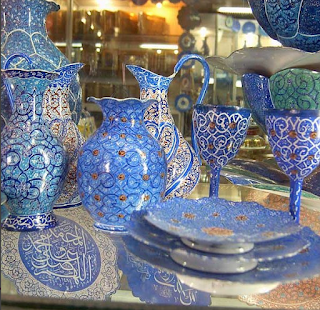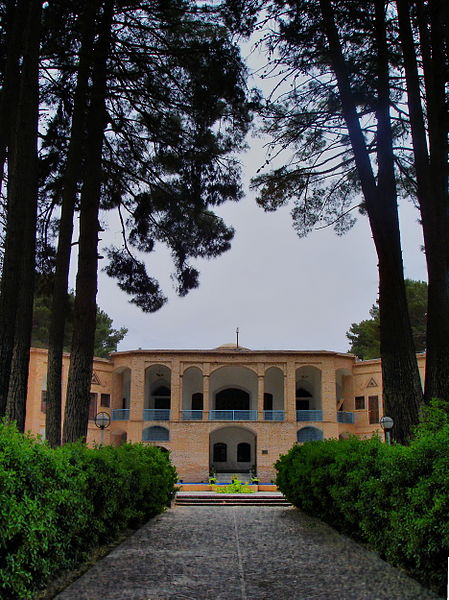The best and famous Iran handicrafts:
The best and famous Iran handicrafts:
Meenakari (Minakari):
This iran
handicraft (Mina) is defined as some sort of glass-like coloured coat which can
be stabilised by heat on different metals particularly copper. Persian Enamel
handicrafts can be used as wall hanging plates, home decor and candy
dishes.
In ancient times the
surviving monuments of Iran handicrafts art are notable for a tradition
concentrating on the human figure (mostly male, and often royal) and animals. Persian art continued to place larger emphasis on figures than Islamic
art from other areas
It’s
one of the most famous Iran handicrafts that you can find it in Isfahan that
this handicraft have five thousand years record
Turquoise Inlaying on Copper (Firoozeh Koobi):
Is one of iran handicrafts which small pieces of turquoise
(firoozeh) are set in mosaic fashion. Between these turquoise (firoozeh) are
some dark layers to set each turquoise (firoozeh) next to each other in order.
This art was fared in the hands of Yusuf Hakimian sixty or seventy years
ago in Mashhad and twenty years ago Hajj Dadash took this idea to Isfahan.
Wood & Copper Inlaying (Khatam Kari):
Is an ancient Persian technique
of inlaying. About the inventor of wood and copper inlaying (khatam kary) are
so many talks but most of the locals believe that Ibrahim the prophet invented
it.
This famous iran
handicraft is originally from iran but some people believe that it’s from
Isfahan but they are wrong.
There are sometimes more
than 400 pieces per square inch in a work of average quality. In each cubic centimeter of inlaid work, up to approximately
250 pieces of metal, bone, ivory and different kinds of wood are laid side by
side, glued together in stages, smoothed, oiled and polished.
Inlaid articles in
the Safavid era took on a special significance as artists
created their precious artworks. Woods used include betel, walnut, cypress and pine. These works include doors and windows, mirror frames, Quran boxes,
inlaid boxes, pen and penholders, lanterns and shrines.
Hand Painting Miniature (Miniator):
This iran
handicraft is a small handmade oil painting on paper or more importantly on
a piece of camel bone. The techniques are broadly comparable to the
Western and Byzantine traditions of miniatures in illuminated manuscripts like
hafiz’s and saadi’s love-poets. The bright and pure colouring of the
Persian miniature is one of its most striking features. Some are inscribed with the name of the
artist, sometimes as part of the picture itself. This
magnificent art was from Timurid era.
Metal Engraving (Ghalamzani):
This iran handicraft is the art of carving superb designs on
various metals such as copper, brass, silver and gold. Isfahan is
the maincenter for engraving. Persian Metalwork Engraving is perhaps the
most continuous and best-documented artistic medium from Iran in the Islamic
period. Each hand engraved item may take up to one week to be
finished depending on its size.
The history of this handicraft is not
very well-known . In the last years of before Christian, metal working and
etching was so famous in Iran and had a valuable effects from that moment until
now.
Persian Termeh Tablecloth:
This iran handicraft is a hand woven colourful textile with
special patterns mainly Persian Paisley which was originated in Yazd.
Weaving Termeh is a sensitive, careful and time-consuming work that a
good weaver could produce only 25-30 centimetres in a day and
was famous in the early parts of safavid era. Although nowadays they are not
100% hand made, a good quality Termeh can be woven maximum of 100 cm a day
and since there are only a few machines for weaving Termeh, it is still an exclusive
and costly kind of tablecloth.









Comments
Post a Comment